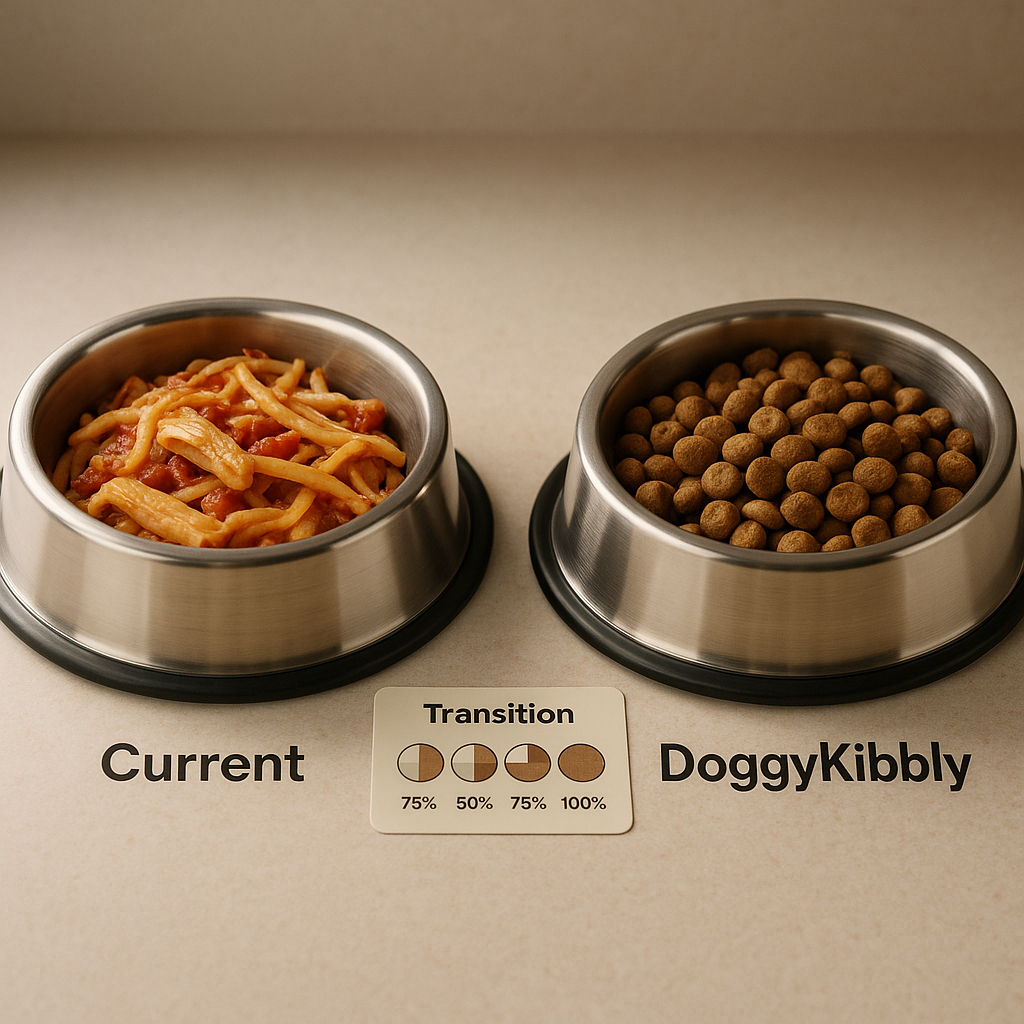Transitioning Your Dog to Weight Loss Food: A Step-by-Step Guide

Switching your dog to a new food, especially a weight loss formula, requires a gradual transition to prevent digestive upset. A sudden change can cause vomiting, diarrhea, and refusal to eat. Following a proper transition schedule ensures your dog accepts the new food while maintaining digestive health.
Why Gradual Transitions Matter
Dogs have sensitive digestive systems that adapt to specific food formulations. Sudden changes disrupt the balance of beneficial bacteria in the gut, leading to digestive issues. A gradual transition allows:
- Digestive enzymes to adjust to new ingredients
- Gut bacteria to adapt to the new food composition
- Your dog to accept the new taste and texture
- Monitoring for any food sensitivities or allergies
The 7-10 Day Transition Schedule
Most dogs successfully transition over 7-10 days. For dogs with sensitive stomachs or previous digestive issues, extend this to 14 days. Here's the recommended schedule:
Days 1-2: 25% New Food, 75% Old Food
Mix one part new food with three parts old food. Feed this mixture for two days, monitoring your dog for any signs of digestive upset. If your dog experiences vomiting or diarrhea, slow the transition further.
Days 3-4: 50% New Food, 50% Old Food
Increase to equal parts new and old food. Continue monitoring your dog's stool consistency and overall well-being. This is typically when dogs begin accepting the new food more readily.
Days 5-6: 75% New Food, 25% Old Food
Most of the meal is now the new food. Your dog should be eating normally at this point. Watch for any changes in appetite or energy levels.
Days 7-10: 100% New Food
Complete the transition to the new weight loss food. Continue monitoring for the first week on 100% new food to ensure your dog maintains good digestive health and accepts the food long-term.
Special Considerations
Some situations require adjusted transition schedules:
- Sensitive stomachs: Extend each phase by 2-3 days
- Senior dogs: May need a slower 14-day transition
- Picky eaters: Mix food more thoroughly and consider adding warm water to enhance aroma
- Previous food allergies: Monitor closely for any adverse reactions
Signs of a Successful Transition
Watch for these positive indicators:
- Normal, firm stools
- Consistent appetite
- No vomiting or excessive gas
- Normal energy levels
- Willingness to eat the new food
Warning Signs to Watch For
If you notice any of these, slow the transition or consult your veterinarian:
- Persistent vomiting or diarrhea
- Loss of appetite for more than 24 hours
- Excessive gas or bloating
- Lethargy or decreased energy
- Signs of allergic reaction (itching, hives, facial swelling)
Tips for Picky Eaters
Some dogs resist new foods. Try these strategies:
- Add warm water to enhance aroma and soften kibble
- Mix in a small amount of low-sodium chicken broth (ensure it's safe for dogs)
- Gradually reduce old food more slowly over 14 days
- Feed at regular times to establish routine
- Remove uneaten food after 20 minutes to encourage eating
Maintaining the Weight Loss Formula
Once fully transitioned, stick with the weight loss formula consistently. Switching back and forth between foods can disrupt digestion and slow weight loss progress. If you need to change foods again in the future, follow the same gradual transition process.
When to Consult Your Veterinarian
Contact your veterinarian if:
- Your dog refuses to eat for more than 24 hours
- Severe digestive upset persists
- You notice signs of food allergy
- Your dog loses weight too rapidly after starting the new food
- You have concerns about the transition process
Conclusion
A gradual 7-10 day transition to weight loss food protects your dog's digestive health while ensuring acceptance of the new diet. By following a structured schedule, monitoring your dog closely, and adjusting as needed, you can successfully switch your dog to weight loss nutrition without digestive upset. Remember, patience is key—rushing the transition can cause problems that set back your dog's weight loss journey.
